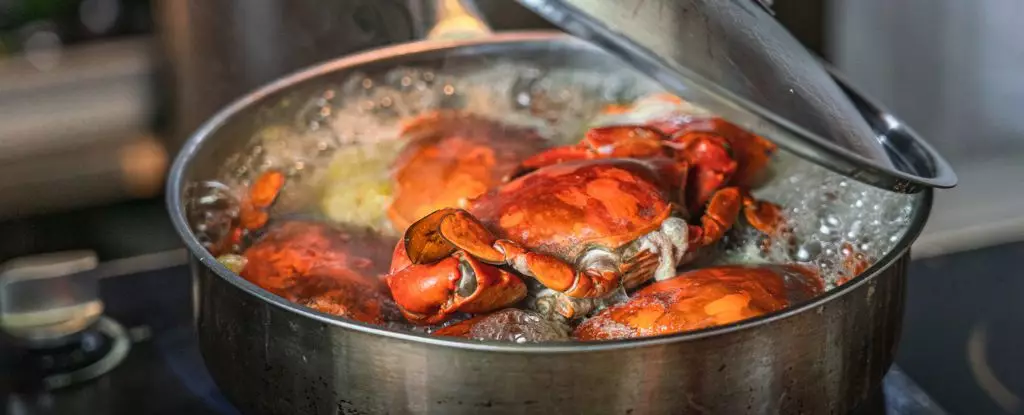For centuries, the idea that crustaceans, such as crabs and lobsters, possess a sophisticated ability to feel pain has been a subject of significant debate. Traditionally perceived as simple creatures with rigid exoskeletons, recent scientific research has uncovered startling evidence suggesting that these marine animals may actually possess a complex awareness of pain. A groundbreaking study focusing on shore crabs (Carcinus maenas) provides compelling evidence that these creatures can indeed process pain in nuanced ways dictated by both the severity and the location of the injury. This revelation challenges longstanding assumptions and urges a reevaluation of how humans treat these organisms, particularly in culinary contexts.
Researchers employed advanced monitoring techniques similar to electroencephalograms (EEGs) to study the brain activity of living shore crabs. By affixing electrodes to the crabs’ shells, they were able to detect the electrical signals emitted by the crabs’ nervous systems in response to various stimuli. In a series of experiments, the crabs were subjected to different forms of pain trials, including exposure to acids and mechanical prodding. The results were remarkable; the crabs not only exhibited evident responses to harmful stimuli but also displayed differentiated brain activities based on the type and intensity of the pain inflicted. Higher concentrations of acid and painful mechanical stimuli elicited more significant activity from the crabs’ central nervous system, suggesting that they process these experiences with a form of awareness.
Historically, the scientific community has grappled with the definition of pain and whether non-vertebrates, such as crustaceans, possess the neural architecture required to experience it. Critics argue that behaviors exhibited by crustaceans in response to harmful stimuli are merely reflexive reactions rather than indicators of conscious pain processing. However, the findings from this recent study reveal a counter-narrative: the existence of specialized pain receptors and patterns of brain activity analogous to those in higher vertebrates could indicate a more complex understanding of pain among these creatures. The research adds to a growing body of evidence suggesting that pain, while traditionally thought of as a vertebrate experience, ‘may’ extend to a wider array of taxa than previously believed.
These findings pose critical ethical questions for the seafood industry and dining practices. If crustaceans are indeed capable of experiencing pain, then practices that involve boiling or cutting them alive should be reconsidered in light of our moral responsibilities towards sentient beings. Zoophysiologist Lynne Sneddon from the University of Gothenburg argues for a reformation of shellfish processing methods to mitigate potential suffering. This claim has opened avenues for advocating humane treatment and better welfare standards for crustaceans in both commercial and domestic kitchens.
Moreover, the awareness that these supposedly “simple” creatures may experience complex sensations invites a broader discussion regarding the treatment of all non-human animals. It challenges us to reflect on our culinary practices and how they intersect with the values of compassion and ethical consumption. As research continues to illuminate the cognitive and emotional lives of animals we once marginalized, it becomes increasingly difficult to ignore the implications of our choices as consumers.
While this study marks a significant advancement in crustacean research, it is merely the beginning. Further investigation is necessary to clarify the specific mechanisms through which these animals process pain and to assess the implications for informal versus commercial settings. Importantly, researchers hope their findings will lead to changes in culinary practices designed to minimize suffering among crustaceans. The biological similarities across various crustacean species may provide a foundation for future studies aimed at understanding pain perception within a broader ecological context. Ultimately, as we seek to balance our dietary habits with ethical considerations, continuing to explore and unveil the complex lives of these animals may foster a more compassionate world for all creatures.


Leave a Reply